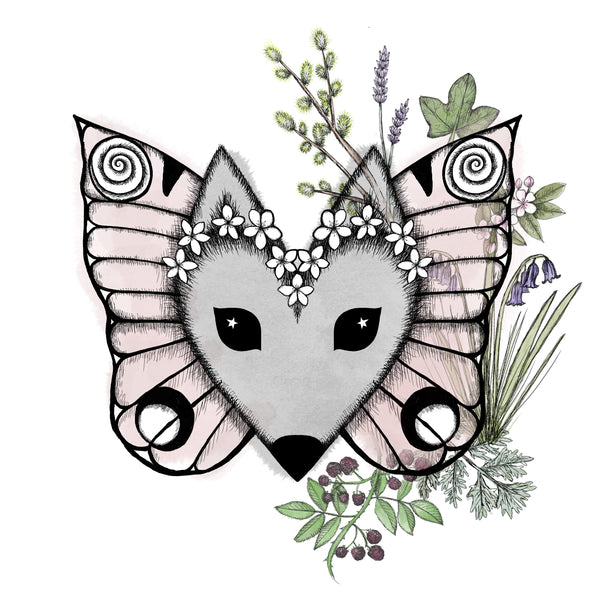Another magical session with Wild Life Drawing was a gorgeous way to spend a January morning. This time, we virtually visited Ark Wildlife Park to meet their Artic Foxes.
Jamie of this rescue zoo took in two foxes when another zoo was closing. To his surprise, one of them was pregnant and had 14 Cubs! They can have up to 25 in the wild - life is tough for an Artic Fox, so they have all kinds of adaptations to help them cope with the harsh conditions, and a large litter size is one of them.

In the wild, the foxes form loose packs. As new cubs arrive, the males leave and the females stay together, so Ark Wildlife rehomed the male cubs once they were old enough, and now take care of a beautiful pack of fluffy white female foxes, and their dad.
Even though we rarely get very much snow here in the U.K., the foxes still go white in winter. It was incredible to see how fluffy and white they are, even though it has been quite muddy. 90% of Artic Foxes will go a slate grey colour in summer, with 10% staying white all year.
Artic Foxes grow very fast, reaching adult size in about 5 months. As Jamie sat in their enclosure with them, some of them came to investigate him and play, biting his shoe laces. They are harder to tell apart when they are all white, but Marshmallow has one blue eye and one brown and is the most daring and cheeky. After Jamie had been in with them for a while, the excitement died down and they all curled up to nap. They are crepuscular - most active at twilight, so the day time is a quieter time for them. We got the chance to study and draw some of them more closely as they curled up with their spectacularly fluffy tales.
Like Grey Seals, these foxes have a lot of features that help them to keep warm, including snouts and ears that are smaller than other fox species.
They also are an animal with very dense fur - only sea otters have more fur per inch.
Surprisingly, Artic Foxes were once native to the U.K. They came over into the British Isles during the Ice Age, and survived as the ice melted...until they were wiped out by humans in medieval times.
I knew that bears, wolves, lynxes, even lions had walked these lands before, but I didn't know that these beautiful foxes had too... they don't seem to get a mention in rewilding conversations and chats about what species we would work to bring back.
I'm not sure why, but I did feel excited to think my ancestors would have known them, and that there was a chance someone might be imagining ways for their furry paws to walk here again.


